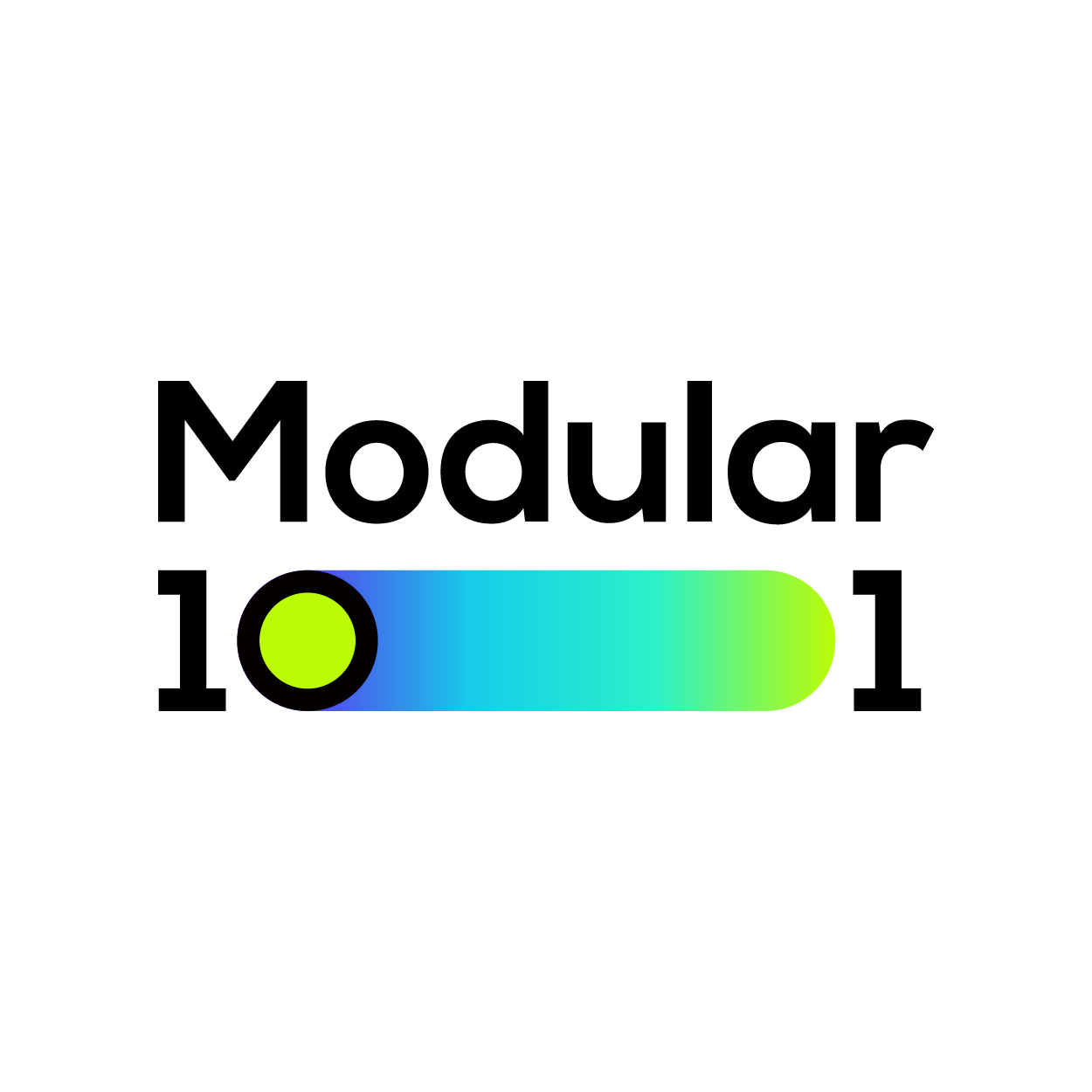zkEVM Validiums can reduce Ethereum gas fees by 90%
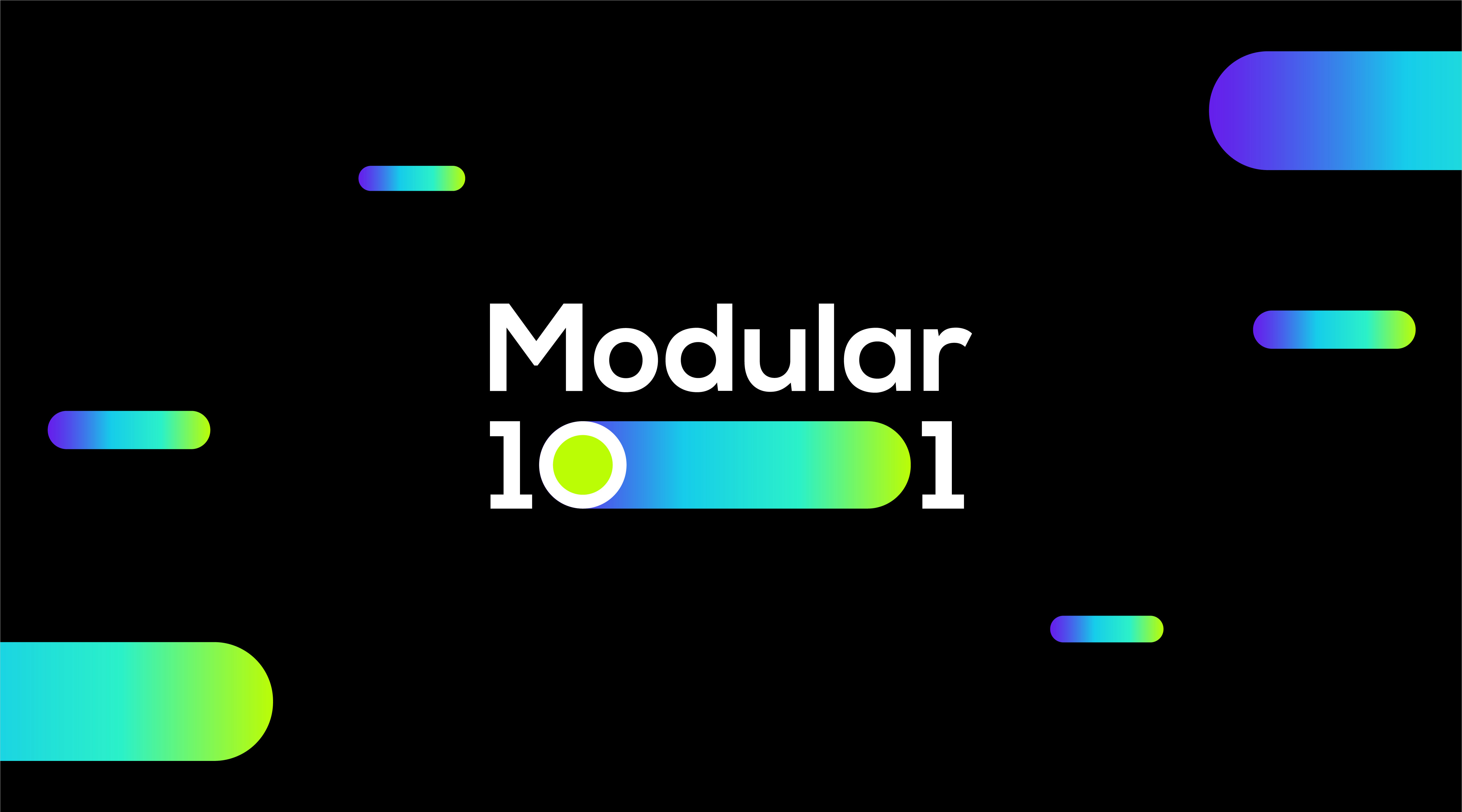
As Avail nears mainnet launch, this series will explore potential integrations between Avail and leading scaling solutions to show how developers can integrate with Avail and take advantage of its secure, decentralized and low-cost data availability blocks chain.
Brief summary:
zkEVM Validiums can reduce Ethereum’s gas fees by 90%.
Avail provides secure, low-cost, and decentralized block space for data availability.
The verification of zkEVM Validiums is implemented through smart contracts on Ethereum.
Avail was spun off from Polygon Labs earlier this year.
Avail is heading to mainnet.
zkEVM Validium on Avail
zkEVM Validium is a new technology framework that significantly reduces the cost of conducting transactions on the zkEVM blockchain. This cost reduction is achieved by publishing transaction data to the Avail blockchain, which is specifically designed for data availability, rather than to Ethereum.
Avail Blockchain was designed and built from the ground up as a professional data availability layer. The Avail blockchain generates and secures raw block space that other blockchains, such as the zkEVM chain, can utilize for their data availability needs.
Building zkEVM Validium using Polygon CDK allows you to benefit from seamless interoperability and shared liquidity within the Polygon ecosystem, and leverage future-proof ZK technology to be settled on Ethereum, significantly reducing transaction costs.
How does the zkEVM chain manage data availability?
The zkEVM chain built using Polygon CDK has Ethereum as its default data availability layer. Transactions are sorted, verified and released to Ethereum in batches in the form of calldata. Transactions on Ethereum are expensive, so deciding what data your zkEVM chain will publish to Ethereum is an important consideration when building a new zkEVM chain. Currently, up to 90% of the cost paid by the zkEVM chain to publish data to Ethereum is for transaction data.
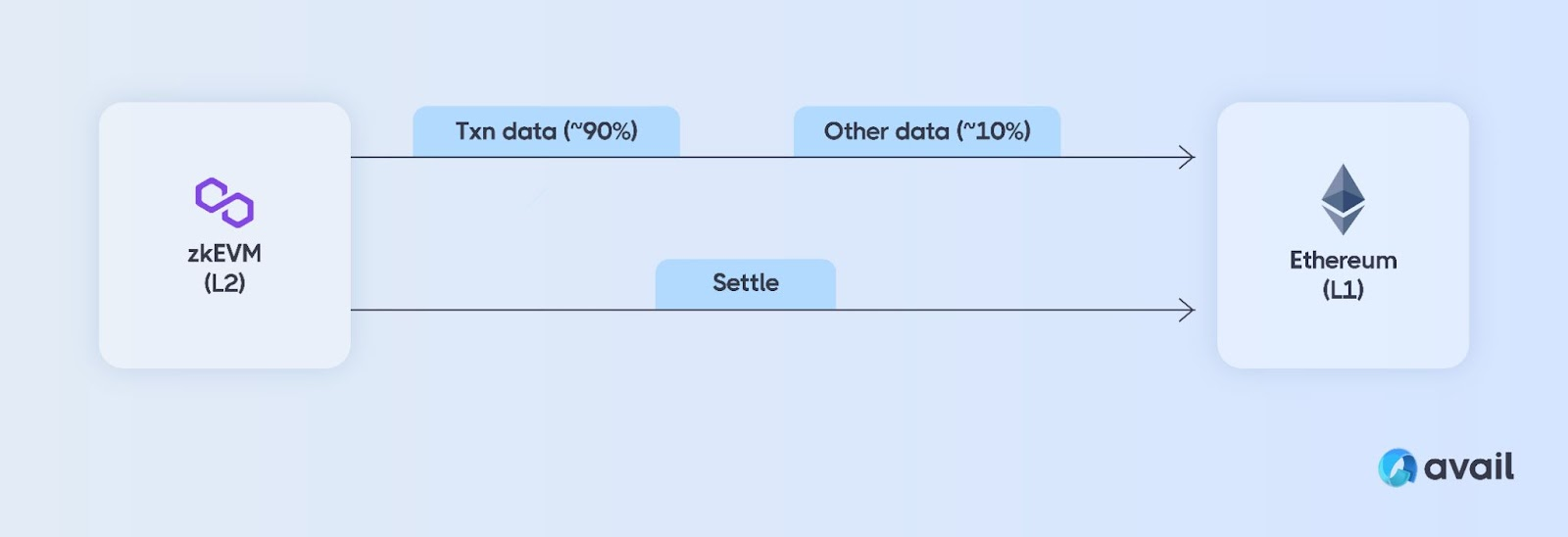
Although some blockchains use Ethereum as a data availability layer (DA layer), Ethereum itself is not specifically designed to be a data availability solution (DA solution). This is one of the main reasons why using Ethereum as a data availability layer is relatively expensive. In contrast, using a blockchain specifically designed and built for data availability needs, such as Avail, will be less expensive.
What is zkEVM Validium?
zkEVM Validium is an improved version of Polygons zkEVM node and contract that uses Avail to manage data availability instead of Ethereum. This provides new and existing teams building the zkEVM chain a streamlined option to manage DA on Avail’s blockchain and benefit from improved economics. zkEVM Validium reduces the amount of data that needs to be published to Ethereum by up to 90%, significantly reducing the chains operating costs and enabling lower transaction fees for end users.
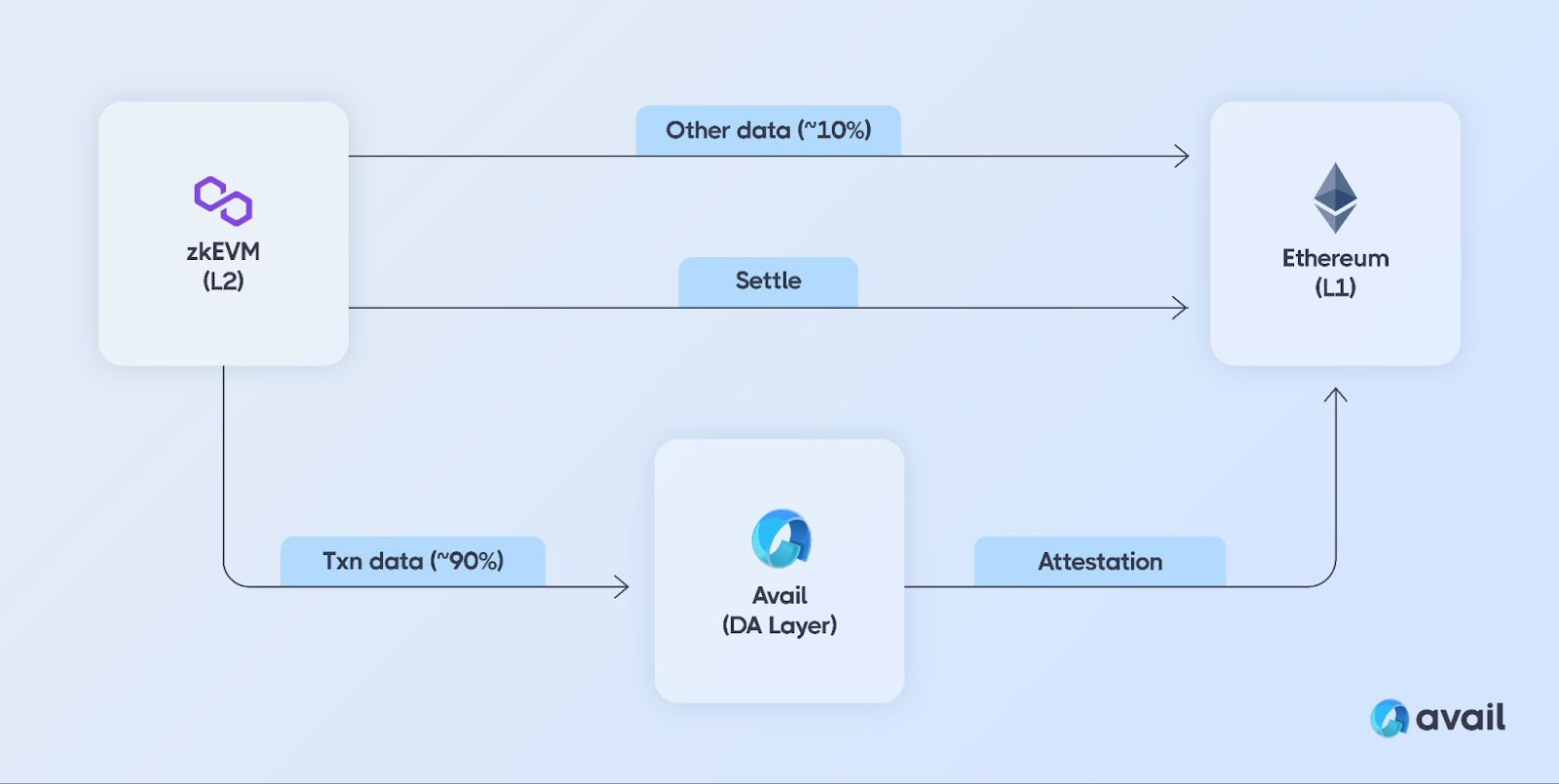
What is Avail?
Avail is a blockchain focused on data availability. Its blocks are designed to provide secure, decentralized and low-cost block space for the data availability needs of other blockchains (such as the zkEVM chain). Avail also uses future-proof ZK technology, which leverages proof of validity to verify that data posted to the Avail network is safe and available.
Avails nominated proof-of-stake blockchain network is built using the Polkadot SDK to reduce the risk of validator centralization and supports up to 1,000 external validators. Data is published on Avails blocks by other blockchains and verified by the Avail network, but not executed.
Avail started as a Polygon project in 2020 and became an independent entity in 2023. The team, led by Polygon co-founder Anurag Arjun and former Polygon head of research Prabal Banerjee, aims to deliver industry-leading data availability solutions.
How does Avail work?
The data is published to the Avail blockchain, where it is expanded via erasure coding. This process adds redundancy to Avail-managed data, which makes it more difficult for nodes to suppress or delete any data, making Avail-managed data more secure and robust. Avail then generates two proofs for verification and ensuring that the data leaves a footprint in the block header. One is the KZG polynomial commitment of the committed data, and the other is the data root, that is, the root of the Merkle tree whose leaves are the committed data blocks.
Once a majority of Avails validators agree on a block, it is finalized using the GRANDPA finality gadget. At this time, data availability is guaranteed by Avail. The data root in the confirmed block can be used to prove the inclusion of published data in the confirmed Avail block.
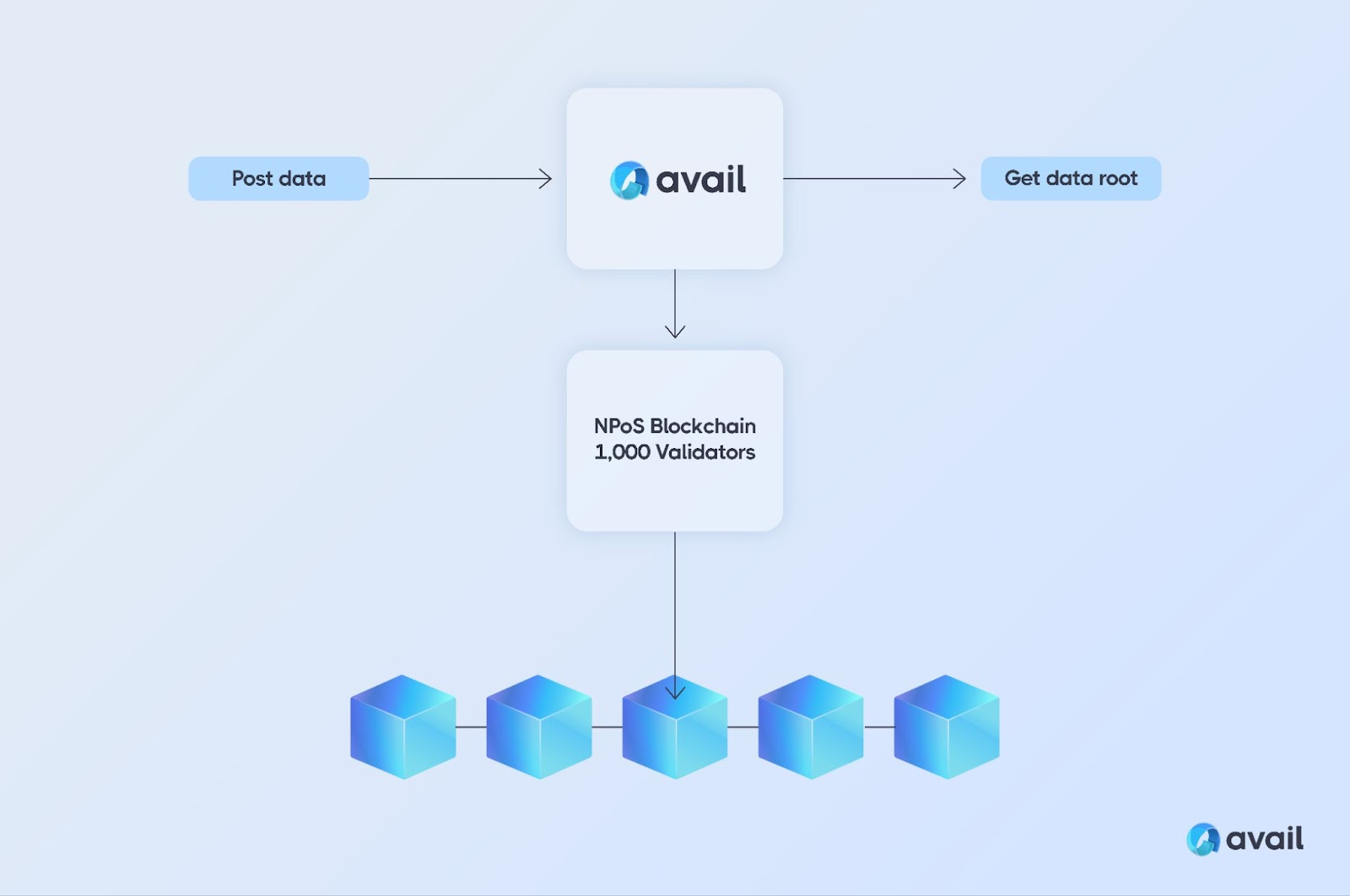
How does zkEVM Validium work?
Just like now, the sequencer creates the transaction batch, and before the batch is closed, the batchs RLP-encoded transaction data is sent to the Avail blockchain.
Here, the data goes through Avails standard processing procedures, including erasure coding and commit generation. Once a majority of Avails validators agree on a block, it is finalized. At this point, the data is guaranteed by the Avail blockchain network, providing a soft confirmation. The DA containing the proof including block number, leaf index, tree width and proof is sent back to the sequence generator.
The data root is sent from Avail to Ethereum through the Vector data proof bridge. This enables the Validium sequence generator to verify on Ethereum that Avails validators have reached consensus on the availability of the data. Once the sequence sender receives confirmation that the data root of a given batch of transactions has been successfully published to Ethereum, the batch can be committed. The sequence generator submits a proof of inclusion to Ethereum.
Below is a simplified diagram showing how zkEVM Validium works, for a more detailed view check out the documentation.https://github.com/availproject/validium-node?ref=blog.availproject.org#architecture
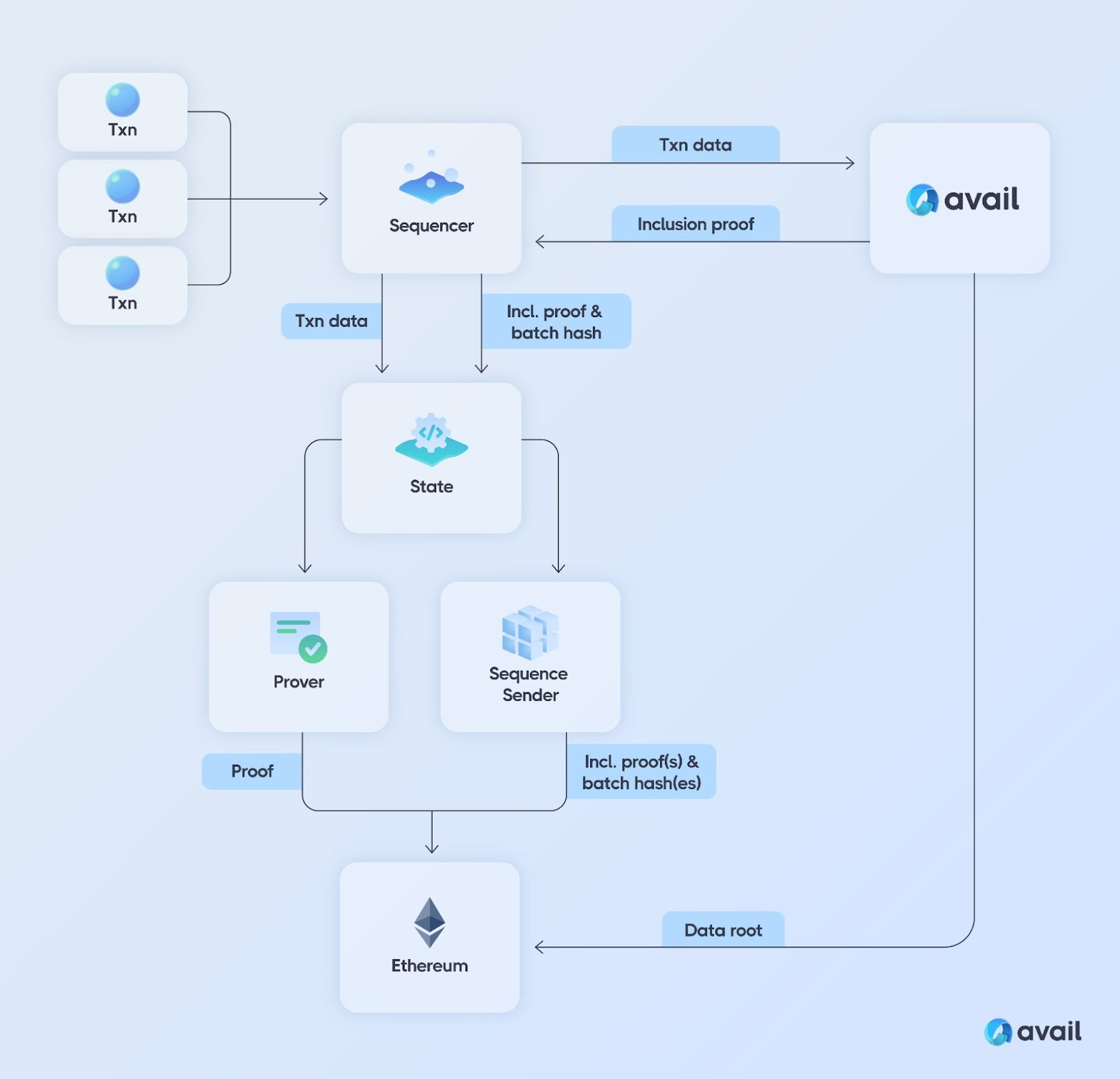
Comparison of zkEVM Chain and zkEVM Validium
The following table highlights the main differences between zkEVM Chain and zkEVM Validium. The main difference is that zkEVM Validiums transaction data is managed off-chain by the Avail blockchain, thus inheriting the security of the Avail network.
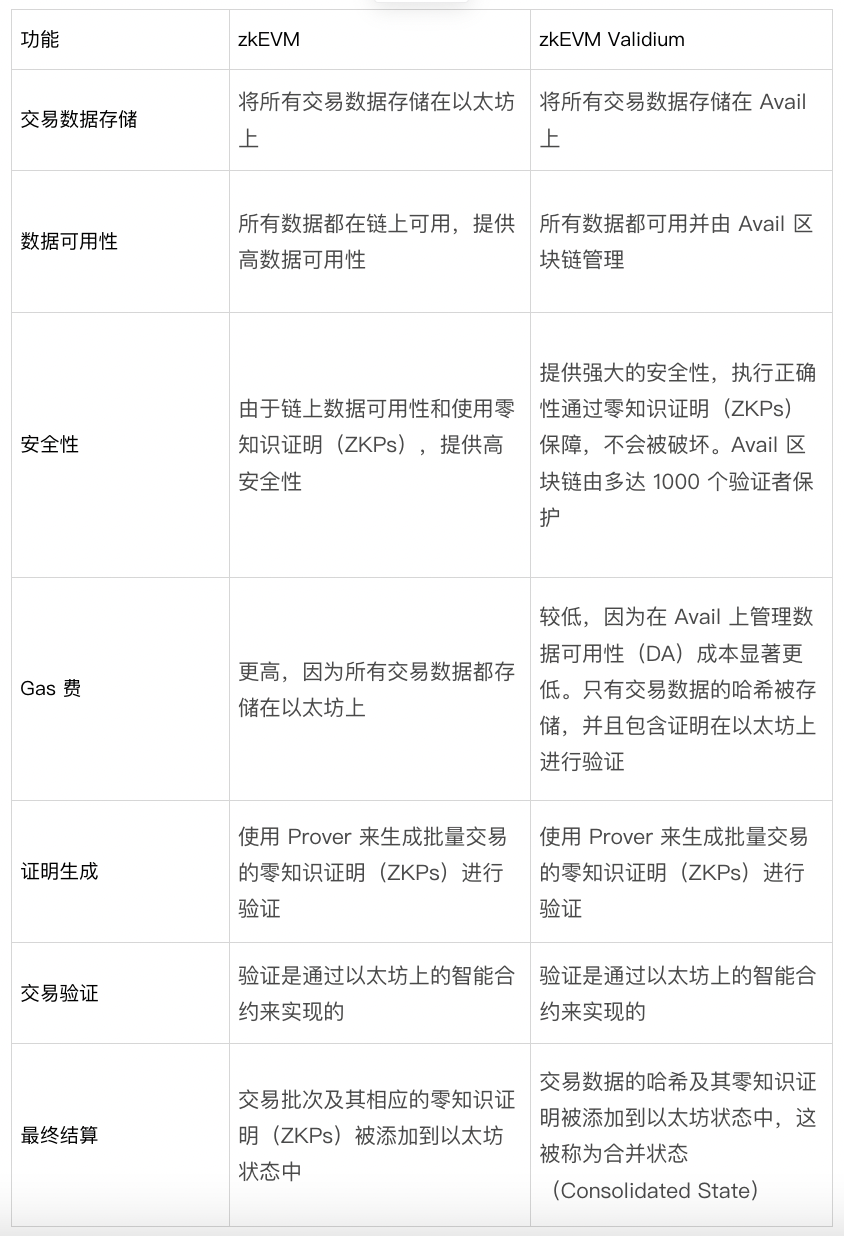
Build zkEVM Validium now
Polygon CDK provides developers a way to build highly customizable, scalable, and interoperable second-layer blockchains that benefit from Polygons cutting-edge ZK technology. zkEVM Validium enables you to do all this while reducing transaction costs.
Start using Validium node warehouse and contracts! Start building and testing your zkEVM Validium chain today! If you have any questions, you can join the Available forum or Discord. To learn more about Avail, check out the Avail documentation and follow us on X.

